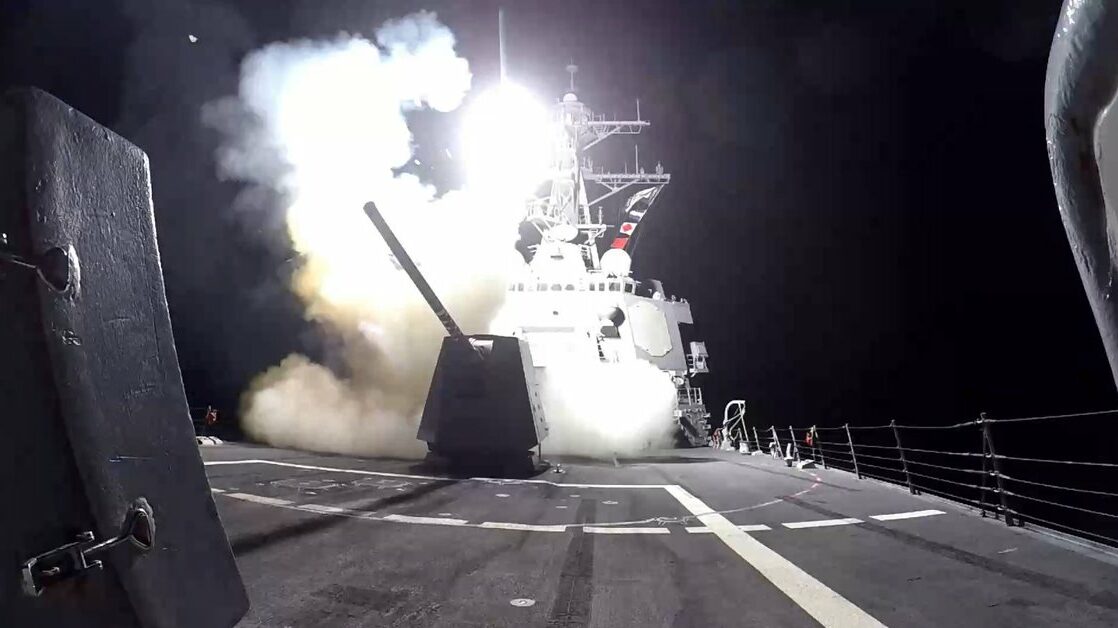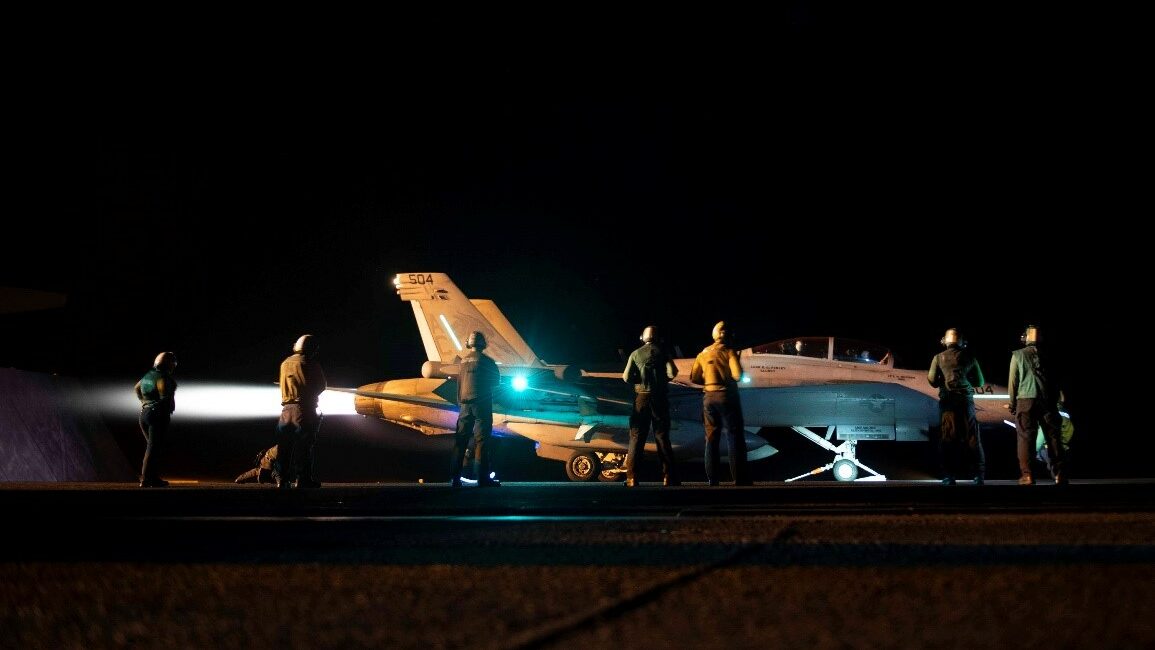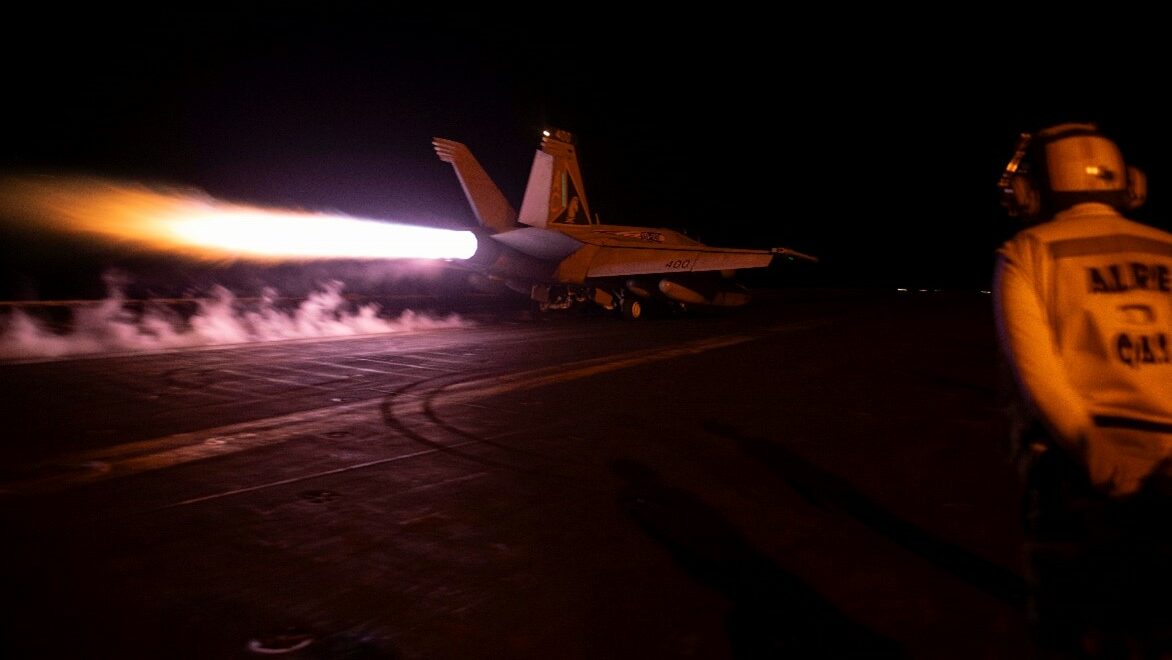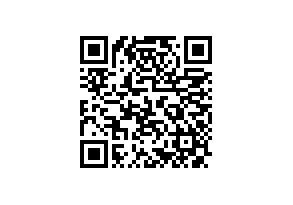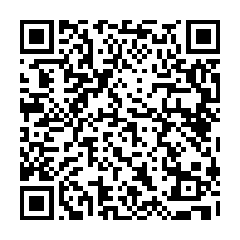The United States and the United Kingdom launched late on February 3 joint strikes against dozens of targets of the Houthis (Ansar Allah) in Yemen.
The militaries of Australia, Bahrain, Canada, Denmark, the Netherlands and New Zealand provided support for the strikes, according to a statement released by the U.S. Central Command (CENTCOM)
The strikes hit 36 Houthi targets at 13 locations in Houthi-controlled areas of Yemen, the command said, adding that the targets included multiple underground storage facilities, command and control, missile systems, drone storage and operations sites, radars and helicopters.
Two U.S. Arleigh Burke-class guided missile destroyers, USS Gravely and USS Carney, fired Tomahawk land-attack cruise missiles as part of the strikes, a U.S. official told CNN. F/A-18 fighter jets from the USS Dwight D. Eisenhower aircraft carrier also took part in the strikes, according to the officials.
Meanwhile the British Ministry of Defense said that RAF Typhoon FGR4s fighter jets from Royal Air Force Akrotiri military base in Cyprus took part in the strikes.
Defense Secretary Lloyd Austin said in a statement that “this collective action sends a clear message to the Houthis that they will continue to bear further consequences if they do not end their illegal attacks on international shipping and naval vessels.”
“We will not hesitate to defend lives and the free flow of commerce in one of the world’s most critical waterways,” Austin added.
Meanwhile, British Defence Secretary Grant Shapps said in a statement of his own that the latest strikes were not an escalation in hostilities, but instead were designed “to protect innocent lives and preserve freedom of navigation”. He added that he was confident they had “further degraded the Houthis’ capabilities”.
Houthi military spokesman Brigadier General Yahya Saree said in a statement posted on the X social platform, previously known as Twitter, that a total of 48 American and British strikes hit Yemen, targeting the capital, Sanaa, as well as the provinces of al-Hudaydah, Taiz, al-Bayda, Hajjah and Sa’dah.
“These attacks will not deter us from our moral, religious and humanitarian stance in support of the steadfast Palestinian people in the Gaza Strip, and will not go without a response and punishment,” the spokesman said, without reporting any casualties.
The Houthis, who are backed by Iran, have targeted dozens of Israel-affiliated vessels and others owned by the U.S. and the United Kingdom since November 19 in response to the ongoing Israeli war and siege on Gaza, which has so far claimed the lives of more than 27,000 Palestinains.
The last series of strikes on Houthi-controlled areas in Yemen was the third by the U.S. and UK since November 11. The U.S. carried out dozens of other strikes on its own.
The joint strikes came in addition to U.S. “self-defense” strikes earlier on February 3 that targeted six Houthi anti-ship cruise missiles that were being prepared for launch against ships in the Red Sea, CENTCOM said. Another self-defense strike was also conducted on a Houthi anti-ship cruise missile early on February 4, according to the command
Just a day earlier, the U.S. launched retaliatory airstrikes on more than 85 targets of Iran’s Islamic Revolutionary Guard Corps and its affiliated forces in Syria and Iraq in response to last weekend’s drone strike on a base in Jordan which claimed the lives of three American service members and wounded more than 40 others.
The recent attacks on Iraq, Syria and Yemen show how the U.S. has been relying more and more on force to impose its presence in the Middle East and support Israel’s onslaught on Gaza. This will only lead to more escalation against Washington and its interests by Iran and its allies in the so-called Axis of Resistance.



